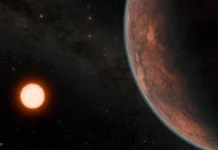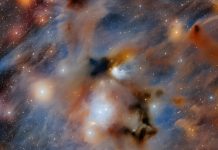
The James Webb Space Telescope (JWST), a remarkable tool of NASA, has recently made an exciting discovery in a part of space known as Pandora’s Cluster, or Abell 2744.
Researchers, led by a team from Penn State University, have found the second and fourth most distant galaxies ever seen.
This is a big deal because these galaxies are incredibly far away, nearly 33 billion light years from Earth!
A Glimpse into the Early Universe
These distant galaxies give us a unique look back in time.
The light we see from them today was emitted when the universe was just about 330 million years old, which is quite young considering the age of the universe.
Interestingly, the light has traveled about 13.4 billion light years to reach the JWST. But because the universe keeps expanding, these galaxies are now about 33 billion light years away from us.
Unique Shapes in the Cosmos
What makes these galaxies stand out is their size and shape. Unlike other distant galaxies that usually look like tiny red dots in images, these new ones are much bigger.
One looks like a peanut and the other like a fluffy ball, which is quite unusual and intriguing for astronomers. This discovery was detailed in a paper in the journal Astrophysical Journal Letters.
The Challenge of Studying Early Galaxies
Studying these ancient galaxies is important for understanding the early universe.
Bingjie Wang, a postdoctoral scholar at Penn State and a member of the JWST UNCOVER team, explains that we have much to learn about early galaxy formation. Before this discovery, only three galaxies were confirmed at such a great distance.
One fascinating aspect of this discovery is how it helps us understand the past. Joel Leja, an assistant professor at Penn State, points out that the light from these galaxies is three times older than Earth.
These galaxies shone through the thin hydrogen gas that filled the early universe, acting like beacons that help us understand the physics of that era.
Surprising Size and Diversity
What surprises astronomers is the size of these galaxies. One of them is six times larger than what was expected, stretching about 2,000 light years across.
This is interesting because the early universe was thought to be quite compressed.
The diversity in the properties of these galaxies is also intriguing, as they show different characteristics even though they are made of similar materials.
The Role of Gravitational Lensing
The JWST used a phenomenon called gravitational lensing to spot these galaxies. This occurs when the gravity of a massive object, like a galaxy cluster, bends and magnifies the light from objects behind it. This natural magnifying effect helped the telescope see these distant galaxies.
These discoveries were part of the first-year science operations of JWST. This telescope has powerful infrared instruments that could potentially find even more distant galaxies.
However, researchers note that not finding galaxies beyond these might indicate either the limits of galaxy formation or the need for a larger observational window.
A Milestone for Astronomy
This discovery is a significant achievement in the field of astronomy and a testament to the capabilities of the James Webb Space Telescope.
It demonstrates the potential for future discoveries that could further unveil the mysteries of the early universe.
Source: Pennsylvania State.



